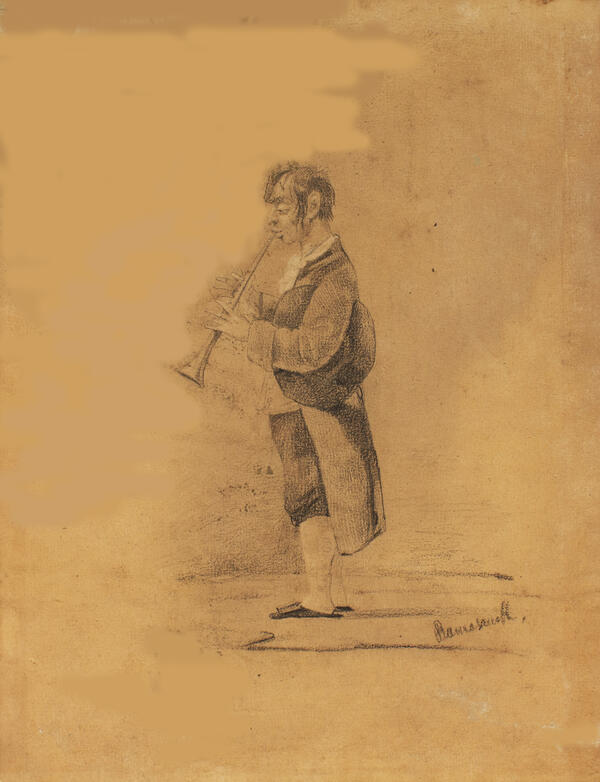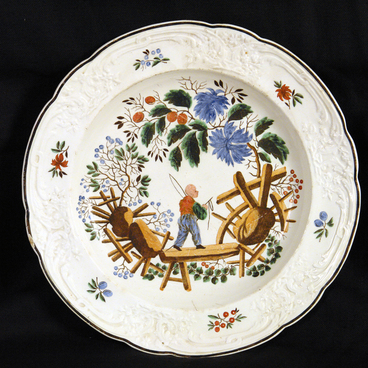The sculptor and graphic artist Nikolai Ramazanov was born into an artistic family, and choosing between the Theater School and the Academy of Arts, he chose the latter one. During his studies, he received many awards, and for his thesis, the statue ‘Faun Carrying a Kid’ (The State Russian Museum), he was awarded a big gold medal. He studied drawing with Fyodor Solntsev, attended the sculptural class of Boris Orlovsky and, later, Samuil Galberg and created monuments to N. Karamzin in Simbirsk and G. Derzhavin in Kazan. Among his more famous and later sculptural works are the death masks of Nikolai Gogol and Vissarion Belinsky, bas-reliefs for the pedestal of the Nicholas I monument, high reliefs for the outer walls of the Cathedral of Christ the Savior. While teaching at the Moscow School of Painting, Sculpture and Architecture, where he rose to the rank of professor, Ramazanov again turned to literary activity. The sculptor planned to publish a collection entitled ‘The Materials for the History of Art in Russia’, which was supposed to include biographies of Russian artists and his critical articles about exhibitions, but he released only the first volume.
Being an academic sculptor, Ramazanov was also distinguished for his talent as a skilled drawer. Even his genre work is marked by a creating for naturalistic reflection of the image and is deeply aesthetic. One of the graphic drawings of the sculptor, kept in the collection of the Tarusa Art Gallery, is ‘The Flutist’ (second quarter of the 19th century). The pencil drawing represents a profile picture of a man playing the flute. The artist, with great care and skill, reproduced even the smallest details: the musician’s tousled, overgrown hairstyle, the voluminous collar of a white shirt, a wide-brimmed hat, which he presses to himself with one hand. His features are drawn in a portrait, and the thoughtful expression on the character’s face brings psychologism into the image. Through the various shading in monochrome pencil technique, the artist managed to convey the difference in shades of wardrobe items.
Being an academic sculptor, Ramazanov was also distinguished for his talent as a skilled drawer. Even his genre work is marked by a creating for naturalistic reflection of the image and is deeply aesthetic. One of the graphic drawings of the sculptor, kept in the collection of the Tarusa Art Gallery, is ‘The Flutist’ (second quarter of the 19th century). The pencil drawing represents a profile picture of a man playing the flute. The artist, with great care and skill, reproduced even the smallest details: the musician’s tousled, overgrown hairstyle, the voluminous collar of a white shirt, a wide-brimmed hat, which he presses to himself with one hand. His features are drawn in a portrait, and the thoughtful expression on the character’s face brings psychologism into the image. Through the various shading in monochrome pencil technique, the artist managed to convey the difference in shades of wardrobe items.



